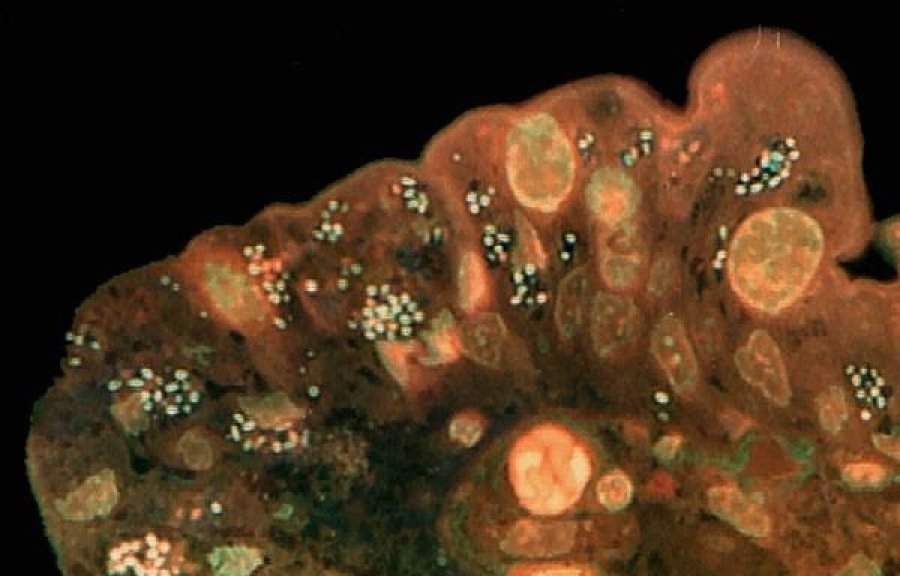Genomic 'haircut’ makes world’s tiniest genome even smaller
September 21, 2010

September 21, 2010

The world’s tiniest nuclear genome appears to have “snipped off the ends” of its chromosomes and evolved into a lean, mean, genome machine that infects human cells, according to research published by University of British Columbia scientists.
Until recently, E. cuniculi, a parasitic fungus commonly found in rabbits that can also be fatal to immunocompromised humans, has been widely regarded as having the smallest known nuclear genome. At 2.9 million base pairs (Mbp) and approximately 2,000 genes, the genome of E. cuniculi is less than one-two thousandth the size of the human genome.
But now, a team of researchers led by UBC Botany Professor Patrick Keeling sequenced the genome of a closely related parasite that makes the E. cuniculi genome seem positively king-sized. The genome of E. intestinalis, a sister species of E. cuniculi that infects human intestines, is 20 per cent smaller, at only 2.3Mbp.
“On one end of the spectrum, genomes can get larger almost without limit, but there is a limit to how small they can get – they can’t be less than zero,” says Keeling, whose work is published in today’s issue of the journal Nature Communications. “And the question that fascinated us was in an already tiny genome, what else can be lost?”
Keeling and a team of researchers from Switzerland, Canada and the U.S. compared the genome of E. cuniculi and E. intestinalis and found little difference between the chromosome 'cores' but that the ends were all “trimmed” in E. intestinalis.
“The chromosomes are long threads of DNA, and in E. intestinalis its almost as though it got a haircut, removing hundreds of genes, but all from the ends of the threads,” says Keeling.
Keeling, director of the Centre for Microbial Diversity and Evolution and a member of Beaty Biodiversity Research Centre at UBC, says the discovery provides insights into how genomes evolve, especially in extreme conditions.
Keeling is also a scholar with the Canadian Institute for Advanced Research and a Michael Smith Foundation for Health Research Fellow.
We honour xwməθkwəy̓ əm (Musqueam) on whose ancestral, unceded territory UBC Vancouver is situated. UBC Science is committed to building meaningful relationships with Indigenous peoples so we can advance Reconciliation and ensure traditional ways of knowing enrich our teaching and research.
Learn more: Musqueam First Nation